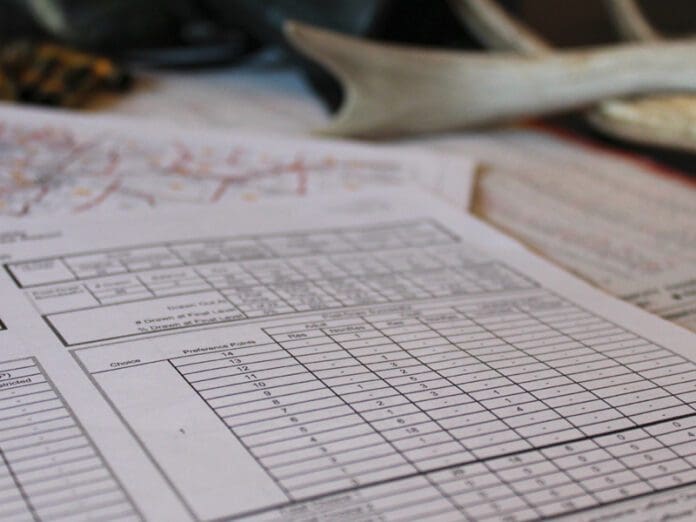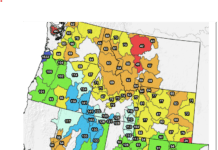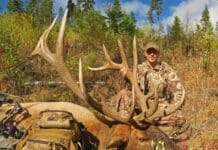The Preference Point system has been implemented almost universally across the Western States, with only a few states without a system. On top of the more traditional Preference Point systems, Bonus Point systems have also been widely used for species such as moose, sheep, and goat. The thesis of the Bonus Point system is the idea that it can combat point creep [Ref 1], as point creep is partially the result of the Preference Point systems’ implementation. Bonus Points allow applicants with few bonus points to have a chance of drawing a tag.
In this article, I will briefly explain the architecture of the Bonus Point system, how it benefits applicants who have greater numbers of bonus points, and then illustrate that the Bonus Point system is doing its job effectively.
Bonus Point Structure and the Thesis
The Bonus Point system aims to reward applicants with more bonus points by improving their draw odds in a nonlinear fashion. The way it works is each applicant is assigned a random application number. That number is reordered and multiplied by a factor that is a function of the number of bonus points to produce the final application number [Ref 2]. The draw selects the applicants starting with the smallest final application number. The key aspect of the generation of the applicant’s final application number is the multiplier.
The Multiplier = 1/(1+BP)
As a mathematician by trade, I needed to gain confidence the multiplier was sound. The best means of achieving that confidence is to test the formula to the mathematical extremes: zero and infinity. In order to be sound, the formula should produce a multiplier of one when zero bonus points are factored in and a multiplier of zero when infinite bonus points are factored in.
The first check of zero points and a multiplier of one shows that the formula would work as it should: equivalent to a random draw with no bonus points affecting the final application number. The second check of infinite bonus points, though not possible in the real world, also works as it should: producing a multiplier of zero which would put that applicant up first for their tag of choice.
These mathematical checks are necessary and provide at least some confidence in the structure of the Bonus Point system. But we need some concrete evidence it is working effectively. In order to do this, I took a look at the data for Moose, Sheep, and Goat in Colorado from 2015 to 2021.
Is the Bonus Point System Working?
So, what do we know about the data and how can we answer whether the Bonus Point system is working or not? First, I looked at the applicants and average draw odds for each species over the last seven years, shown in Figure 1.

As is clearly shown, the number of applicants is gradually increasing each year with the average odds decreasing, as we would expect. The draw odds in this data are an estimate of what the odds would be if the draw was purely random. Now when we compare this unfavorable downward trend in a random draw situation to the data from the Bonus Point system, we can find out how well the Bonus Point system is working.
In the next three figures (2, 3, and 4), for each species, we have the respective pre-draw (no Bonus Point-only applicants) applicants, the post-draw applicants, and the seven-year average draw odds at each bonus point. As we saw in Figure 1, there is a clear increase over time in the number of applicants for each species. But, when we look at the post-draw bonus point distributions, we can see that they have somewhat flattened out. This alone is not significant evidence the Bonus Point system is working, so we take it one step further and check out the odds.

Perhaps surprisingly, the draw odds favor the applicants with higher numbers of bonus points! The blue dashed line indicates the mean draw odds of all the bonus points and the black dashed line is a fit. What those lines indicate is there is a general improvement in draw odds, albeit small, with increased numbers of bonus points.

Perhaps one of the most important takeaways from those plots is there are not overwhelming numbers of zero-bonus-point applicants drawing even with the large increase in applicants over the past seven years. But it’s hard to argue that buying 20 years’ worth of bonus points to increase your average odds by 3% is worth it! At the same time, if you don’t continually buy bonus points, you are at the mercy of the onslaught of new applicants each year as shown in Figure 1.

To bring the data full circle, Figure 5 is a qualitative illustration of the draw odds over the last seven years at each bonus point. This highlights that each year (for the most part) the draw odds are favoring the applicants with more bonus points. Again, although the number of applicants has clearly been increasing, the odds still favor the high bonus point counts, especially for sheep and goat tags. While the odds favor the high bonus point holders, this also shows that hunters just entering the bonus point game do still have a chance at a seemingly once-in-a-lifetime tag.

Time Will Tell
As many hunters know, drawing moose, sheep, and goat tags is very difficult. Up to this point, it looks like the Bonus Point system is holding up to what it aimed to do. At the same time, it is obvious from the increasing number of applicants, and the pre-draw distributions, that the demand for these tags has not yet saturated and will only become more difficult to draw. Unfortunately for hunters, only time will tell if the Bonus Point system will hold its merit.
Comment or ask Mike questions here.
References:
Reference 1: Unraveling The Mystery Of Point Creep
Reference 2: Colorado Weighted Preference Points




















